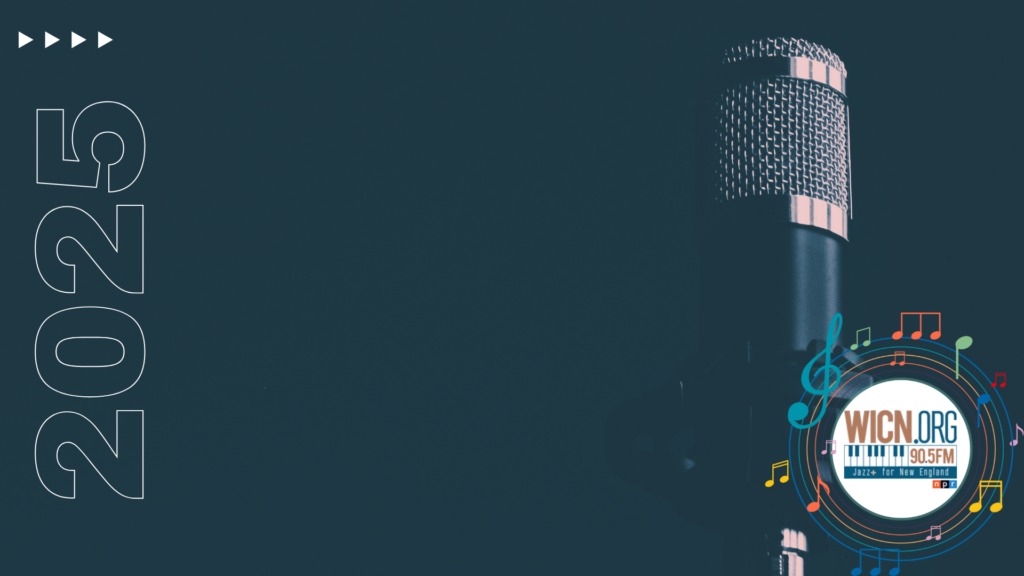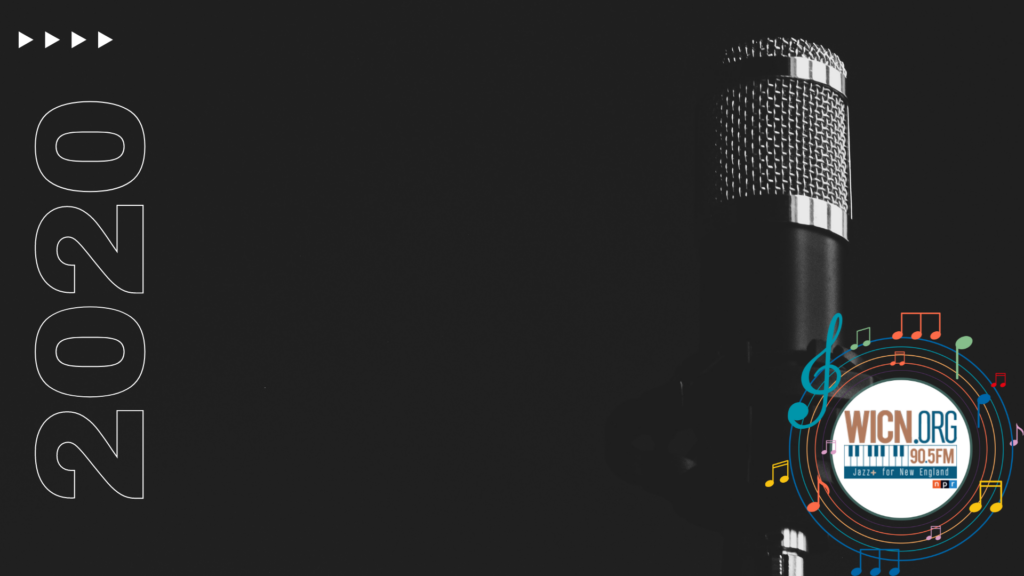Troy “Trombone Shorty” Andrews
Written by Emily Morrow on September 1, 2020
WICN Artist of the Month:
September 2020
Trombone Shorty. Is he, or is he ain’t a Jazz man? Many Jazz traditionalists might have something to say about that.
Ask any music critic or millennial to name their favorite Jazz performers, and Trombone Shorty is often on the list. Could a child who formed his own street brass band as a New Orleans music prodigy be on that list? Could a teenager who attended the same music school as Wynton Marsalis, and who collected his first Jazz award as a twentysomething develop into a jazz man? That same man tinkered with traditional and modern Jazz music to create his unique hybrid sound he calls “supafunkrock?” Didn’t Louis Armstrong and other Jazz greats do the same thing as Trombone Shorty? Let’s take a look.
Born in New Orleans on January 2, 1986, as Troy Andrews, Trombone Shorty was the second youngest of six children of a family with a great traditional Jazz lineage. He was raised in the city’s Treme neighborhood, which was famous for brass bands. New Orleans soon recognized him as a sensational trombone musical prodigy. His brother James gave him his first ‘bone at age 4, because, they say, the family already had a trumpet player. Bo Diddley heard four-year-old Shorty playing trombone in the crowd and then brought him onto the stage to perform. Shorty played in brass band parades by age five and led his own street band by age six. NOLA’s ever-present street music, with its energetic vibe booming from funeral parades and neighborhood clubs, profoundly affected Shorty. In the city where music was its heartbeat, funeral music and the trombone made sense to him.
Trombone Shorty talks New Orleans Jazz and Finding Your Sound:
Was there any wonder that Trombone Shorty found his calling with brass instruments? The Andrews family was replete with brothers, grandparents, and cousins who made their bones within the local Jazz community. Some even say that he was a blood relative to Louis Armstrong. His grandfather, Jess Hill, wrote the song “Oo Poo Pah Doo,” which he and Shorty later performed on the HBO’s Treme series. His cousin Derek Tabb played in the Rebirth Brass Band. With brother James playing trumpet and Darnell on trombone, it was no surprise how both instruments found their way to young Troy’s lips. He tagged along to James’s gigs, and bandmates joshed that the kid was shorter than a trombone. The nickname stuck, even when Trombone Shorty grew to be a six-footer.
Throughout his early teens, already a local legend, Shorty strengthened his craft through what began as a lifelong commitment to diligent practice. Besides his brother James, Shorty’s most significant trombone influence was Fred Wesley, who played with James Brown, and the Rebirth Band cats, who were also inspired by Wesley and the other James Brown horns. Slipping into the clubs with James, it was not uncommon to find Shorty jamming with other musicians, soaking up whatever the local NOLA music scene had to offer.
Trombone Shorty 1/6/16 – Sunny Side Of The Street (with Fred Wesley & Ivan Neville):
During this period, Trombone Shorty released his first recording, Swingin’ Gate (Louisiana Red Hot, 2002), in which his grandfather Jess Hill’s “Oo Poo Pah Doo” was a featured song. Irving Mills’ version of “St. James Infirmary” appeared along with the work of several other legendary composers, but most tracks were Shorty’s handiwork. Shorty magnificently played his secondary instrument (trumpet) on the latter cut, which Louis Amstrong had famously recorded in 1928.
Shorty will blow you away with his 95-second trumpet circular breathing exhibit from a 2009 rendition of “St. James Infirmary” performed during the Blues & Jazz Fest in Salmon Arms, BC.:
Trombone Shorty began his formal music education by entering the New Orleans Center for Creative Arts (NOCCA), having already mastered trombone and trumpet. NOCCA was where great teachers would build on what Shorty learned by ear in his Treme neighborhood, from brother James, Tuba Fats, Cyril Neville, and others. Tuba, drums, guitar, organ, and even glockenspiel already were part of his toolkit. However, it was at NOCCA that trombone and his foundational New Orleans sound prevailed. Several NOCCA classmates appeared on his second album, The End of the Beginning (Treme, 2005). Playing as a quartet, with Shorty and Kermit Ruffins sharing vocals, this early album offered a modern Jazz sound.
Our Big Easy prodigy would continue tinkering with the sound of traditional street bands and Preservation Hall Jazz, taught and learned from early mentors, neighborhood street performances, and NOCCA schooling. Shorty was attracted to what he heard from other NOCCA students, radio, clubs, and bands like Rebirth Band, the traditional brass band that infused funk into their music, and went on to incorporate those ingredients into his unique approach. In a 2004 interview, when asked why his music was so variegated, he said, “I really can’t decide because I hear something different every day.”
When he left NOCCA, Trombone Shorty’s musical journey continued as a featured part of the horn section in Lenny Kravitz’s touring band. Kravitz had initial reservations about the addition of a Jazz player. However, Shorty’s aggressive trombone playing and outrageous stage energy as a sideman convinced Kravitz while building word-of-mouth awareness of this phenomenal trombone talent. Years later, Shorty disclosed that he had long admired Lenny’s singing style and would later seek his vocal mentorship, and Lenny would tour and record again later in life.
By now, Shorty was a virtuoso multi-instrumental musician, sideman, and vocalist. Back again in New Orleans, it was time to cook up the supafunkrock musical gumbo of R&B, rock, soul, funk, hip-hop, and NOLA street Jazz that he had long envisioned. He was nineteen. Handpicked musicians for the band known as Trombone Shorty and Orleans Avenue brought him to our attention as a leader and a frontman.
Soon, Trombone Shorty’s star would burn brightly on all fronts. The Orleans Avenue band released their first album, Orleans & Claiborne (Treme, 2005), named after a Treme neighborhood intersection. Offbeat magazine named Shorty Performer of the Year in 2007. His major-label debut Backatown (Verve), released in 2010, became the first of three of his best-known albums (listen to the title cut “Backatown” on the opening number “Hurricane Season” for the best representations of Trombone Shorty and Orleans Avenue’s cross-genre contemporary Jazz sound.) Old friend Lenny Kravitz played a guitar cameo and sang backup on “Something Beautiful.” New Orleans R&B legend Alan Toussaint played piano on his original “On Your Way Down,” which was the only track not composed by Shorty.
“On Your Way Down” (Live, 2010):
The band’s next album For True topped Billboard’s Jazz Album Chart in 2011. Including well-known guest artists on For True geared the recording for commercial success: a Jeff Beck guitar solo on “Do To Me,” and Warren Haynes’ slide guitar for “Encore”; Neville brothers Cyril and Ivan on “Nerves”; rappers Kid Rock on “Mrs. Orleans” and Ledisi on “Then There Was You.” Reunited with Rebirth Brass Band on the album’s opening cut “Buckajump,” Shorty fuses the track’s New Orleans brass bombast of all eight horns into his inimitable supafunkrock sound.
At age 31, Shorty and Orleans Avenue scored big with the critics again on his third Verve studio recording, Say That To Say This (2013). Shorty plays all instruments except bass on “Shortyville,” and New Orleans funk influencers The Meters appeared on “Be My Lady.” By this point in his career, any Trombone Shorty release would be big news, big sales, and heavy grooves.His first effort under a new contract with Blue Note, Parking Lot Symphony (2017), hit #1 on the Billboard Jazz Album chart—more music from the deepest soulful essence of New Orleans, to the laser-light funk of tunes by The Meters.
Laveau Dirge No. 1:
Shorty loves to play. After Parking Lot Symphony, his fans would show up expecting Shorty, the musician, and Shorty, the entertainer. The band continued touring domestically and internationally, playing clubs and various festivals, sprinkling in appearances on television shows like HBO’s Treme and as a frequent guest on all the late-night shows. In appreciation of Shorty’s artistry, the Obama administration invited him to perform several times at the White House.
Trombone Shorty performs “Here Comes the Girls” on The Late Show with Stephen Colbert
Shorty’s built his career by sharing his music with fans around the world. However, New Orleans was always on his mind, whether performing to support the survivors of Hurricane Katrina or fundraising for numerous local causes. One of Shorty’s most enduring efforts for New Orleans community was creating the Trombone Shorty Foundation and the Trombone Shorty Academy, with the mission to foster New Orleans’s music legacy and the future of its musicians.
Troy Andrews on the Trombone Shorty Foundation:
Is Trombone Shorty’s music contemporary Jazz? Is he is or is he ain’t a jazz man? Shorty’s sound might be like the unrecognizable vegetable that your mama piled onto your plate as a youngster. You swallowed a bite or two after Mama’s threats of no dessert. Later in life, many of us found that unrecognizable vegetables could be pretty tasty.
Give Trombone Shorty a try.
Listen all month on WICN 90.5FM.
Trombone Shorty & Orleans Avenue – Backatown live in Jazzwoche Burghausen, Germany (2011)
https://youtu.be/1ZG9U1HxNds
“Hurricane Season” (Live)
https://youtu.be/rAdazrQaaeo
“Buckajump” Mabie Performance Studio video
https://youtu.be/WkM9T1IoQgI
Trombone Shorty with Fred Wesley- St. James Infirmary at the Obama White House (Feb. 1972)
WWOZ interview (2016)
https://youtu.be/ZRYUhh0y4tA

